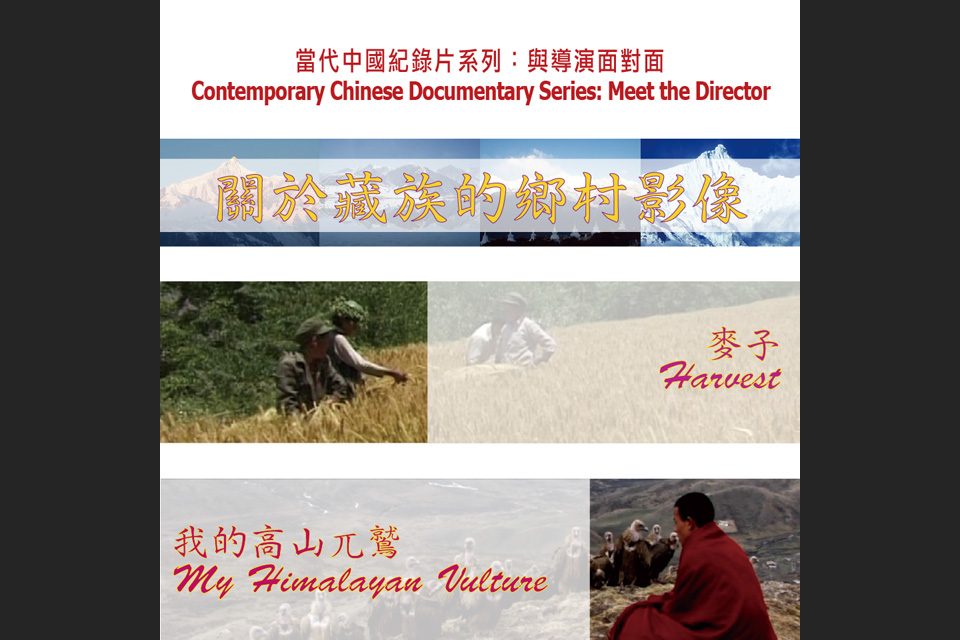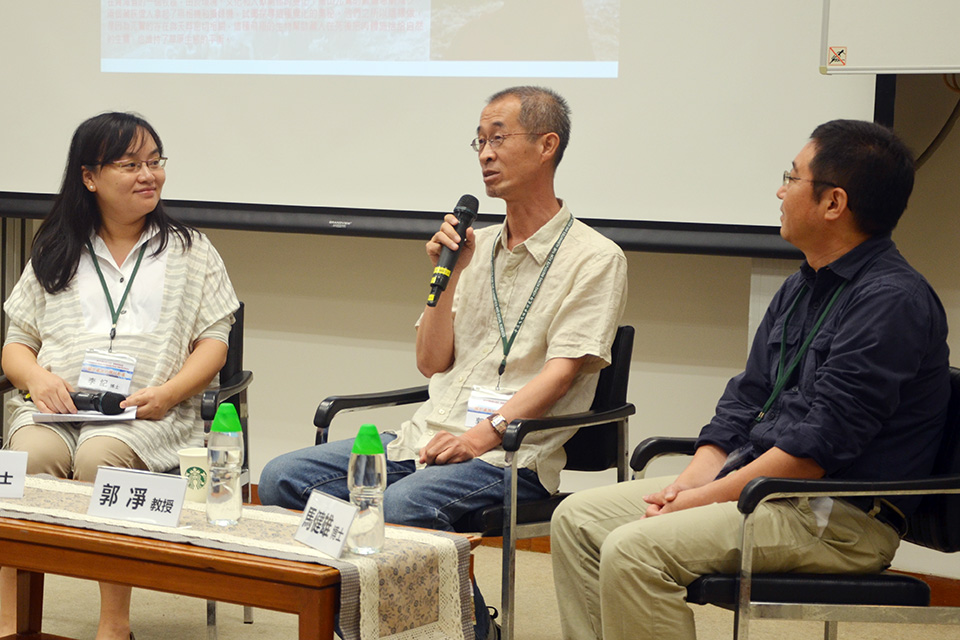- ABOUT IHSSABOUT IHSS
- PEOPLE
- NEWS & EVENTSNEWS & EVENTS
- RESEARCHRESEARCH
- FELLOWSHIPS & GRANTSFELLOWSHIPS & GRANTS
- TEACHING & LEARNINGTEACHING & LEARNING
- PUBLICATIONSPUBLICATIONS
Title:
Harvest (麥子) & My Himalayan Vulture (我的高山兀鷲)
Date:
September 26, 2014
Venue:
T5, Meng Wah Complex, The University of Hong Kong
Rundown:
| 5:30 pm | Reception |
| 6:00 pm | Film screening |
| 7:00 pm | Discussion with Professor Jing Guo (Director) and Dr. Jianxiong Ma (Discussant) |
Language:
| Film screening: | Putonghua & Tibetan dialogue, Chinese subtitles |
| Discussion: | Putonghua & English |
Harvest
On a summer day, the villagers were harvesting wheat at Xidang Village which lies at the foot of Kawagebo Snow Mountain. Seeing the video camera carried by the film maker, women villagers rushed up in a crowd, surrounded him and began performing with abandon in front of the camera. After lunch, the women showed their old pictures to the film maker, put on their festival costumes and ask him to take photos for them. At this moment, the video camera was no longer a dispassionate observational tool; instead, it became an object with which the villagers were playing about.
My Himalayan Vulture
In one of the pastoral areas of Qinghai Province, the number of Himalayan Vulture is dropping dramatically due to the change of environment and human-animal relationship. Two Tibetan lamas took up the camera and video camera to explore the secret behind the change. They had done this because the existence of the Himalayan Vulture is closely related to the celestial burial. These winged creature helps the Tibetans donate their bodies to nature after they pass away as well as keep the ecological balance of the grassland.
Both of the two films tell the stories of the Tibetans, one from the perspective of outside researcher, the other from the perspective of the local Tibetans. The modern tool of DV plays a key role in their observation. Connected by the bond of DV, the outsiders and the locals meet each other, talk with each other and communicate with each other beyond language. They work together and create this new method called Village Video. With the help of this method, they are documenting the changes in environment and culture and are establishing new indigenous knowledge systems by action research.
麥子—郭淨作品
一個夏日,卡瓦格博雪山下西當村的幾個村民正在收麥子,看到作者的攝錄機,女人們擁了過來,隨即在鏡頭前放肆地表演。午飯後,女人們拿出自家的照片觀看,又穿起節日的盛裝要求作者給她們拍照。此時,攝錄機不再是冷靜觀察的工具,而成了村民們玩耍的對象。
我的高山兀鷲—紮西桑俄、周傑作品
在青海省的一個牧區,由於環境、文化和人獸關係的變化,高山兀鷲的數量急劇減少。兩個藏族僧人拿起了照相機和攝錄機,試圖探尋這種變化的奧秘。他們之所以這樣做,是因為兀鷲的存在與天葬密切相關,這種飛翔的生物幫助藏人在死後把肉體施捨給自然的生靈,也維持了草原生態的平衡。
這兩部影片講的都是藏族的故事,它們一個出自外來研究者的視角,一個出自本地藏族【僧人】的視角。在他們的觀察中,現代的影像工具攝錄機起了關鍵的作用。以攝錄機為紐帶,外來的人與本地的人相遇,產生了對話和交流,他們合作起來,共同創造了「鄉村影像」這個新事物。借助鄉村影像的方法,他們在紀錄環境和文化發生的變化,並以行動性研究,去建立新的地方性的知識體系。
麥子
郭淨,民族史博士,雲南省社科院歷史研究所研究員,致力於影視人類學、自然聖境的調查研究。是中國鄉村影像教育的開創者之一,並參與創辦了中國最重要的紀錄電影節:雲之南紀錄影像展。
我的高山兀鷲
紮西桑俄,藏族僧人,佛學博士(堪布),青海省果洛州白玉鄉人,是環保組織「年寶玉則生態環境保護協會」領導者之一,亦為藏地鄉村影像的主要推動者之一。
周杰,藏族僧人,青海省果洛州白玉鄉人,是環保組織「年寶玉則生態環境保護協會」領導者之一,亦為藏地鄉村影像的主要推動者之一。


Copyright © 2025 Hong Kong Institute for the Humanities and Social Sciences, The University of Hong Kong. All Rights Reserved.